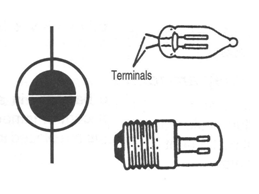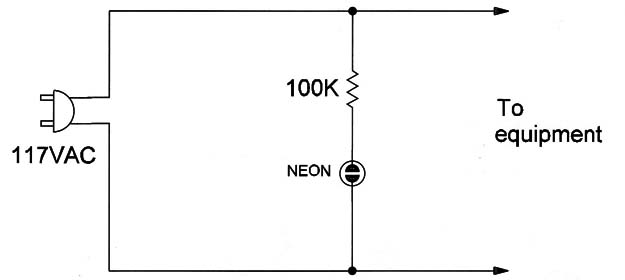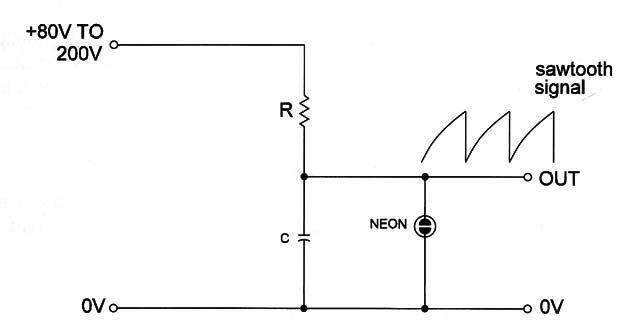The common neon lamp is formed by a small glass bulb filled with neon gas.
Two electrodes are placed inside without one touching the other.
When the voltage across the gas increases reaching the triggering point (between 60 and 80 V), the gas ionizes and becomes a conductor.
The electric resistance falls allowing the circulation of a current.
With the ionization, the gas emits an orange light.
Symbols and Types
Figure 1 show the symbol used to represent the neon lamp and types of this device.


Specifications
The main specification of a neon lamp is the trigger voltage.
Normally it is in the range between 60 and 80 volts. The manufacturers indicate neon lamps by a part number such as NE-2H or HE-51.
Sometimes it is important to know the type of lamp and if it does or does not have a current-limiting resistor inside.
Where they are found and how they are used
Neon lamps can be used both as indicators and elements of an active circuit.
As indicators, they can be found in the input of equipment monitoring the AC power line voltage as shown in Figure 2.

The reader will find that in circuits like this, the lamp has a series current-limiting resistor (typically between 47k and 1M).
Some types of lamps such as the NE-2 have this resistor inside for 120 V use.
Others need an external resistor.
Another application is an oscillator for generating signals as in the configuration shown in Figure 3.

Depending on C and R values, the circuit can generate sawtooth audio signals or make the lamp flash.
Thos circuit operates due the negative resistance of the lamp according the characteristi curve shown by figure 4.

An interesting application of the neon lamp is as a phase indicator as shown in Figure 5.

If placed in the phase terminal of an AC power line, the lamp will glow.
The electrician will not feel any shock because the series resistor limits the current to a very low value, not enough to excite the nervous cells, giving a shock.



